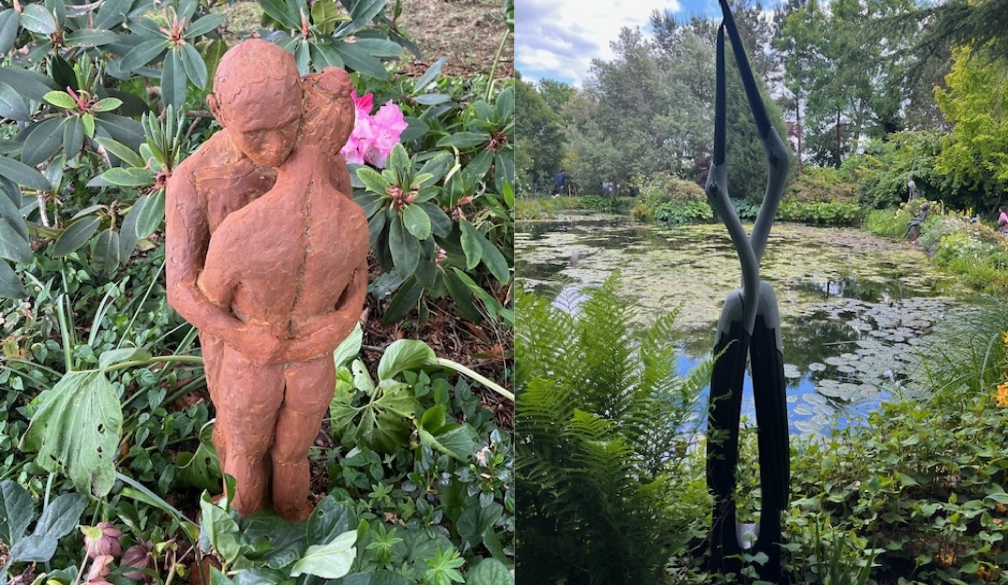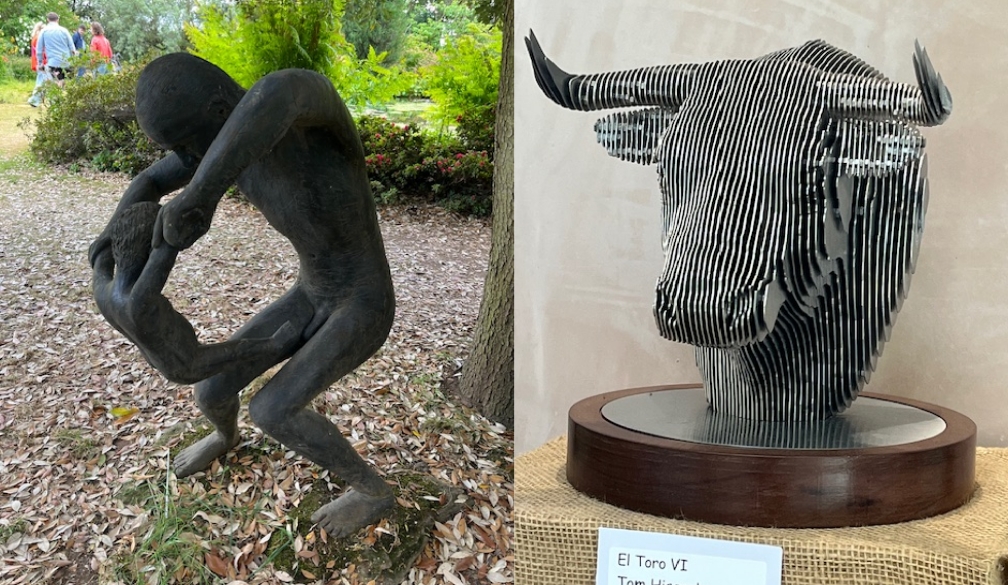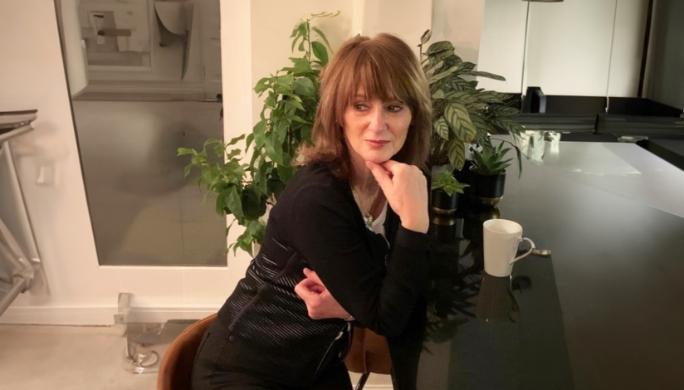The Art of Sculpture
by Catherine Evans

In May of this year, I went to a sculpture exhibition held in the gardens of Kingham Lodge in Oxfordshire. It’s a private house, but every couple of years the family who own it open the gardens to show not only their private collection of sculptures, but also a staggeringly wonderful display by established and new and upcoming talent to the public. The entry fee all goes to charity, and the the vast majority of visiting pieces are available for sale.
Two months later, I find myself still thinking about this exhibition often, and whenever I have five minutes, I look at some of the pictures I took that day. Of course it didn’t hurt that it was a beautiful late spring afternoon, that the gardens are breathtakingly beautiful, with formal lawns, a wildflower area, themed flower beds, herb gardens, hidden pathways and lovely water features, including a large pond. There were hundreds of sculptures, formally displayed in rows, peeping out of the flowerbeds, amongst the bushes, in the nooks of the trees, even amongst the gurgling water features. Many were naturalistic, others were stylised. One of the hardest aspects of being there was to obey the injunction not to touch. Of course I obeyed this. Repeated touch can create an unnatural shine and can destroy the delicate patina of a sculpture. If any proof were needed, the statue of Molly Malone in Dublin provides it. Her bust has been touched repeatedly ‘for luck’ and now shines like a beacon, leading to the #LeaveMollymAlone initiative. By refraining to touch, it’s possible to imagine how it would feel in your body if you did. This should be enough.
Why is sculpture such an important aspect of art? The images are frozen, yet some are impossibly alive. Three dimensions allow the viewer to move around them, something not possible with conventional representational art. The garden and the sculptures are mutually complementary. The organic living matter surrounding the pieces is a natural, moving gallery, whereas the sculptures are permanent and unchanging, or so you would think, but they do change, having a special relationship with space, light, shadow, weather and time. They also change depending on the viewer. The artist contributes only so much, the viewer has to do the rest. Whether realistic or abstract, the viewer’s interpretation depends on their taste, their mood, their attitude, education, culture, background, preferences, knowledge, their personal appreciation of skill, how they interpret the meaning and above all, whether they have an emotional response. This isn’t something that can be predicted.
Sometimes exposure to art can result in overkill. I find it hard to see too much at once, whereas somehow sculpture in a garden feels more emotionally accessible than in a white-cube gallery. Perhaps it’s because I was outdoors with the pieces, enjoying the greenery, the magnificent trees and foliage, with the sun on my face and the breeze on my skin. As Henry Moore put it: “Sculpture is an art of the open air. Daylight, sunlight is necessary to it.” I could absorb more and more of it without viewer fatigue, whereas galleries and museums inspire thought and awe and pleasure, a huge appreciation of beauty and talent … until suddenly they don’t, and you absolutely have to get out of there.

Michaelangelo, possibly one of the greatest sculptors ever to have lived, said: ‘I saw the angel in the marble, and carved until I set him free.’ He believed that the sculptor merely had to carefully remove the excess material. This is a metaphor for all creative processes. All the artist has to do is uncover what is already there. Sculpture is unique as it captures a moment, a gesture, and tells a wordless story via stasis.
Yet stasis does not present the whole picture. There are kinetic sculptures, challenging the idea that sculpture should be permanently immobile. These move by wind, water, motors, mechanics and even by human interaction. There’s a performative aspect to kinetic sculpture. Alexander Calder’s mobiles move within space due to air currents, creating constantly shifting shapes and shadows. Dutch artist Theo Jansen said “The walls between art and engineering exist only in our minds.” His magnificent strandbeests, or ‘beach animals’ are huge skeletal structures made of plastic tubing that are like giant matchstick figures with sails that acquire the ability to move with wind power, eerily acquiring realistic movement without motors.













